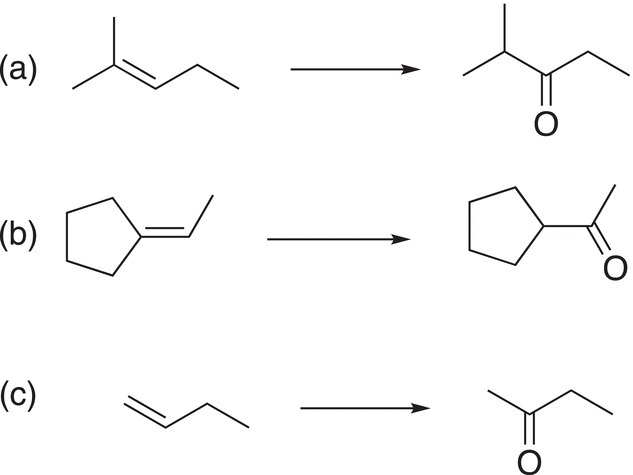Organic Chemistry: Concepts and Applications - Headley Allan D. 2020
Addition Reactions Involving Alkenes and Alkynes
8.9 Applications of Addition Reactions to Synthesis
In this section, methods will be developed to make strategic choices in the use of addition reactions, along with some of the other reactions covered in Chapter 6 in order to accomplish specific transformations and the synthesis of specific target products. An important aspect of organic chemistry is the application of various reaction types to synthesize specific target molecules, which are typically larger molecules and with new functional groups. This area of organic chemistry is called synthetic organic chemistry. For the addition reaction involving nonsymmetrical alkenes, there is typically a mixture of products, but if specific reactions are used, one product can be obtained as the major product. As a result, a careful analysis of the functional groups of a target molecule must be carried out in order to determine the type of addition reaction that must be used in order to synthesize the target molecule. Consider the transformation shown in Reaction (8-100).
(8-100)
Your first task is to make some observations about the target molecule. One observation is that it has a ketone functionality, and one of the reactions that was covered in Chapter 6 to make ketones is the oxidation of secondary alcohols to give ketones. Thus, it is possible to oxidize the corresponding alcohol to obtain the target ketone, as shown in Reaction (8-101).
(8-101)
The next task is to recognize a type of reaction that can be used to make 2-methylcyclohexanol. An anti-Markovnikov addition of water to an alkene will accomplish this transformation as shown in Reaction (8-102).
(8-102)
Note that for the Reaction (8-102), a strategic choice must be made in using the hydroboration—oxidation reaction and not mercuration—demercuration. Another choice would be the addition of water in a catalytic amount of acid, but there are two potential problems; first, the major product would be the Markovnikov addition and second, there is the possibility of rearrangement to give different products. Thus, the sequence of reactions that would be used for the transformation shown in Reaction (8-100) is shown in the reaction sequence given in Reaction (8-103).
(8-103)
Problem 8.17
Determine the appropriate starting alkene and reaction conditions for the synthesis of the compounds shown below.

The same analysis can be applied for the synthesis of other similar compounds, and Problem 8.18 is designed to apply that approach to devise appropriate synthetic routes for the synthesis of different target molecules.
Problem 8.18
Show how to carry out the following transformations, clearly show all steps in the synthesis.
